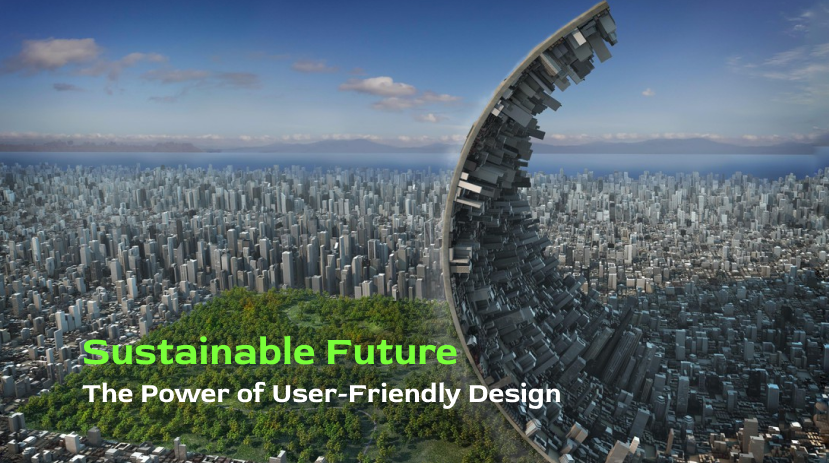In an era where sustainability is not just a buzzword but a necessity, every industry is called upon to reevaluate its practices and embrace more environmentally conscious approaches. One often-overlooked aspect of this shift towards sustainability is the role of design. Design isn’t just about aesthetics or functionality; it’s about creating solutions that are intuitive, efficient, and environmentally responsible. By prioritizing user-friendly design, we can pave the way for a more sustainable future.

Sustainable Future – The Impact of Design
Design plays a significant role in shaping consumer behavior and consumption patterns. Consider packaging design, for example. A user-friendly packaging design that minimizes waste and is easy to recycle can significantly reduce the environmental footprint of a product. According to the Ellen MacArthur Foundation, up to 80% of a product’s environmental impact is determined at the design stage. This statistic underscores the crucial role that designers play in driving sustainable practices.
User-Friendly Design: A Catalyst for Change
User-friendly design goes beyond aesthetics; it’s about creating products and services that enhance the user experience while minimizing environmental impact. Here are some ways in which user-friendly design can contribute to sustainability:
1. Extended Product Lifespan:
Designing products that are durable, repairable, and upgradable encourages consumers to keep them for longer periods, reducing the need for frequent replacements. Research by the UK Design Council suggests that extending the lifespan of products by just nine months could reduce carbon, water, and waste footprints by 20-30% per product.
2. Streamlined User Experience:
Simplifying product interfaces and making them intuitive can reduce energy consumption and waste. For instance, user-friendly interfaces in smart home devices can empower users to optimize energy usage, leading to significant energy savings over time.
3. Sustainable Material Choices:
Choosing eco-friendly materials and employing innovative design techniques can minimize resource depletion and pollution. For example, using recycled or biodegradable materials in product design can reduce reliance on virgin resources and mitigate environmental harm.
4. Behavioral Nudges:
Design can influence consumer behavior towards more sustainable choices. By making sustainable options the default or more convenient choice, designers can encourage users to adopt eco-friendly practices effortlessly.
The Road Ahead: Challenges and Opportunities
While user-friendly design holds immense potential for fostering sustainability, it’s not without its challenges. Designers often face constraints such as cost considerations, technological limitations, and market demands. However, these challenges also present opportunities for innovation and creativity. By collaborating across disciplines and embracing a holistic approach to design, we can overcome these obstacles and drive meaningful change.
Read also : 10 Best Illustrations for Sustainable Web Design
Conclusion
Creating a sustainable future requires a collective effort from individuals, businesses, and policymakers alike. User-friendly design serves as a powerful tool in this endeavor, enabling us to reimagine products, services, and systems with sustainability at their core. By prioritizing usability, durability, and environmental responsibility, designers can shape a future where innovation and sustainability go hand in hand. Together, let’s harness the power of design to build a world that is not only user-friendly but also environmentally sustainable for generations to come.




